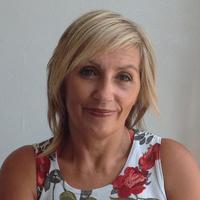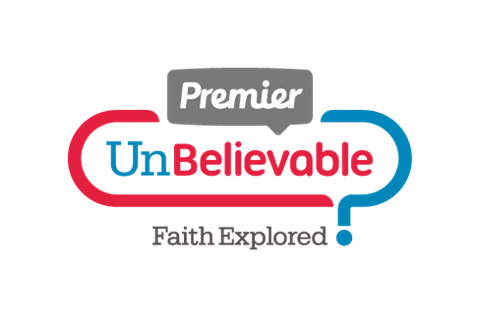
Gangemi has many years of experience working with disabled people and has done substantial academic research within this field. Having served as disability advisor to the Archdiocese of Southwark for 12 years, Gangemi’s work has enabled people with disabilities – as well as clergy, diocesan agencies and parish communities – to move away from a culture of charity to a model of personhood, respectful care, citizenship and belonging.
She was the sole advisor when it came to access and inclusion for people with disabilities during the papal visit to the UK in September 2010 and the Kairos Forum now acts as an advisor to the Catholic Bishops’ Conference of England and Wales. She spoke to Ruth Mawhinney about the marginalisation of people with disabilities, and how Church can be accessible to all.
The time is here for change, and we’re the ones to do it
RM:How is disability defined in the UK, and is it the right definition?
CG: Disability and equality legislation defines a disabled person as someone with ‘a physical or mental impairment that has substantial or long-term adverse effects upon their ability to carry out normal activities’.
Who decides what normal is? What you’ve put in front of them has disabled them. The boundaries, practices and targets have proved inaccessible.
RM:Do you think disabled people are marginalised in modern society?
CG: Within the journey of people with disabilities, their very existence seems to have been compartmentalised. They tend to be assigned labels rather than using their names. You’re asked to work with ‘a child who has cerebral palsy’, rather than ‘Jenny’. The cerebral palsy will come first. Often parents will express a feeling of being an appendage to a medical condition.
RM:Where do negative attitudes about disability stem from?
CG: People It seems we have been influenced by Aristotle, who began to reflect upon what makes a good society. The practice towards disabled children was very much that if they were born with a disability, they were to die. Infanticide was practised systematically on newborns.
Throughout the whole of time, you look at how the body is shown in art and you can begin to see the really subtle negative symbols about disabled people. For example, look at how art was used in religion at a time when not many people were literate. What you’ll find is goodness portrayed by a beautiful body, beautiful faces – the body being the outward sign of the inward spirit – and evil as a deformed body. When we look at why we think disability is not good, we’ve had these messages throughout time that disability is bad.
RM:What is the typical response to children with disabilities?
CG: When a child with a disability is born, people say, ‘Isn’t it a terrible shame?’ and ‘It’s a burden’. Before birth we want them, afterwards we don’t know what to do with them. We say if you’ve got a disability that you’re ‘not quite there’.
The language we use around the gift of life means we set up a sort of ‘norm of ability’ and of a body form that fits in with those images from art. And yet it really doesn’t reflect the way in which, as a Christian community, we receive all life as a gift. That then plays out in practice. In society, parents are often put under pressure to have an abortion if their child is disabled. In the Church, we tend not to have anything that’s accessible for our kids.
RM:What does Jesus tell us about the way we should treat those with disabilities?
CG: The very nature of Christ is accessible. When you look at everything that Jesus says and does you realise he’s giving you access to God. He is putting right the mistaken perception of Aristotle and all those guys who decided what it meant to be human.
You see that when it comes to his mission he doesn’t rely on able-bodied people, but he works with the lives of disabled people and seeks their company out. When we retell the stories, we go around telling the children he made the man on the stretcher better. No he didn’t; he met them. He stopped excluding them.
RM:What can the Church do to support those with disabilities?
CG: When we look at disability in the Christian tradition, you begin to see a different picture. We’ve designed a disability awareness training programme, which invites churches to revisit the whole concept of beauty and to explore art. They’re encouraged to work with parishes and families, to put a new story forward.
Why? Because this generation has been called to halt the discriminative approach; to recognise beauty in all people and to be stewards of a new way forward. This generation has a job to do. You cannot talk about inclusion. We still use that word. We see the way we do things as the right way, and we’ll bring disabled people in if they’re lucky. It’s not about doing for, it’s about doing with. And recognising there’s only an ‘us’, not a ‘them and us’. Then we can be communities.
It goes back to the very fundamental recognition that, in God, all humanity and all difference is gathered into one place. You need to look at what you do based on what you believe. In society there are lots of people who know how to make things accessible, but don’t know why spirituality is important. In the Church, we understand spirituality, but we don’t know how to be accessible.
It’s not about doing for, it’s about doing with - and recognising there’s only an ‘us’, not a ‘them and us’
RM:What does the Kairos Forum do?
CG: There are lots of different training programmes. The work Kairos does has come into existence because there is an increased interest in the whole area of disability. Training in the area of disability and access is still not as popular as training in other areas is - but we don’t really have a choice about whether or not we should undertake training around disability; we need to be ready for anyone who comes into our churches. We provide training from the premise of belonging rather than inclusion, understanding that we’re a generation that has been called prophetically to make a difference and that beauty is found in all.
I’ve come up with various processes that can be used to mediate faith to make it more accessible. The practice we have is based on the incarnation: God, out of his love, becomes human so as to give the Spirit. Our existence is to equip the Church so that we can become communities.
When you abandon yourself to the Spirit of God and work with children who can’t do things in the typical way, you abandon yourself to the gift of the Trinity. Those of us who do this work can’t understand why church communities are empty of disabled people and their families.
RM:What was the highlight of the papal visit in 2010?
CG: When the Pope had his large event, all of a sudden this child came onto the stage. If you don’t work with children who are autistic, you wouldn’t have noticed. The child went up to the Pope and stood in front of him, and turned his head from side to side. We have this understanding that through the spirituality of the person with autism, you’re able to tell whether you’re authentic or not.
The Pope looks at him and at no point does he grab him or talk to him, he just receives him. All of a sudden, the child looked at him, and the pope looked back and smiles. The child moved towards the Pope and touched him – amazing for someone who’s autistic – entering into a form of communication that is usual for the Pope, but very unusual for the child. There was the presence of Christ among them.
God so wants to understand us that he absorbs his way of being and assumes human form. Why? To enter into friendship with us. The communication is down to us. That means anyone has that potential. For the Pope to foster a true sense of belonging in the lives of people who are sick or people with disabilities, we have to make sure they are welcome.
It’s time. And the most exciting bit of good news is that the time is here for change, and we’re the ones to do it. What a calling.




























